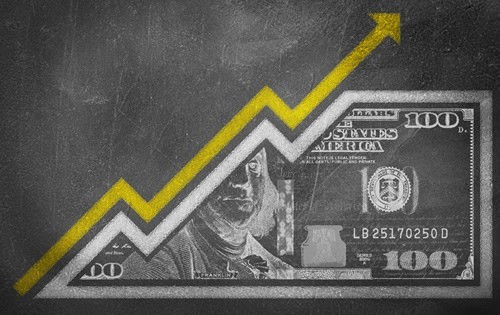Finance Globe
Introduction of Inflation (Part 1 of 2)
As you have probably seen in the news lately, a lot of people, companies, and government representatives are talking about inflation. Given inflation can be one of the most impactful things to you and your savings, I wanted to write a few articles to discuss inflation. In 2 articles that we will post, I will outline what inflation is, how it impacts you, what the recent “experts” are saying about inflation, and lastly, how to best protect yourself against inflation.
Please feel free to post any follow up questions or comments in the comments section below.
What is inflation? The technical definition of inflation is effectively the decline of purchasing power of a given currency over time. Inflation is given as a percentage which estimates the rate at which the decline in purchasing power occurs. Inflation focuses on a broad range of goods and services in an economy and focuses on the rate over a period of time. If inflation is positive, it means that one unit of currency buys less than it did historically. The opposite of inflation is deflation, which means the purchasing power of one unit of currency increases and prices of products or services declines. From a practical standpoint, think of inflation has having to spend more money to purchase the same goods and services. You will have to spend more to fill your gas tank, buy groceries, or pay for movies. It essentially increases your cost of living. For example, if the inflation rate for buying milk is 3%, then if milk costs $2.00 this year, it will cost $2.06 next year. While that may not sound like a lot, but if that includes everything, including rent, inflation can really reduce your standard of living, especially if your income doesn’t increase by at least the inflation rate.
What is the Target Inflation Percentage? The United States Central Bank has a monetary policy to avoid excessive inflation and tries to avoid deflation. The Federal Reserve publicly aims for a target inflation rate of 2% per year. The Federal Reserve balances inflation rate with unemployment and typically inflation rate can range 1 to 3% in any given year. Typically, short term inflation above 2% isn’t materially impactful as long as it goes back to 2% quicky. However, an extended run of inflation above 3% can be very problematic. It materially raises your cost of living and it chips away at your investment returns. Inflation can also cause new borrowings to increase as well. This can create a strong economy into a weak economy very quickly.
Why are People Talking about Inflation? A lot of pessimists are concerned that inflation is going to go materially above the 2% target as a result of recent government actions. The government has been spending billions and trillions of dollars to compact the recent COVID-19 pandemic flowing money into the economy and the Fed interest rate is being kept very low to help boost the economy. The thinking is the flow of money and the pent of demand from the pandemic could drive a large increase in spending once the pandemic is “over”. This could, in theory, drive up the demand of goods and services and could push prices higher, which would drive inflation.
What are the Main Causes of Inflation? There are generally two causes of inflation. The primary causes is just when demand outpaces supply for a good or service. Buyers of a certain product want the product so they are willing to pay higher prices for it. This is one of the most basic principles of economics. The price of that product will continue until the supply matches the demand for it. The second main cause of inflation is a result of supply issues. This happens when a supply of a certain product or service is restricted which causes the price to increase, even though demand of that product hasn’t changed. An example would be during a forest fire that burned all of the corn in the United States (extreme example). While the demand for corn didn’t go up, the supply dramatically declined and therefore the price would go up considerably. There are also experts who say that an increase in the money supply also causes inflation. The theory is that printing out too much money by the government causes too much capital chasing too few goods. This results in triggering both demand and supply inflation.
Comments
By accepting you will be accessing a service provided by a third-party external to https://www.financeglobe.com/



